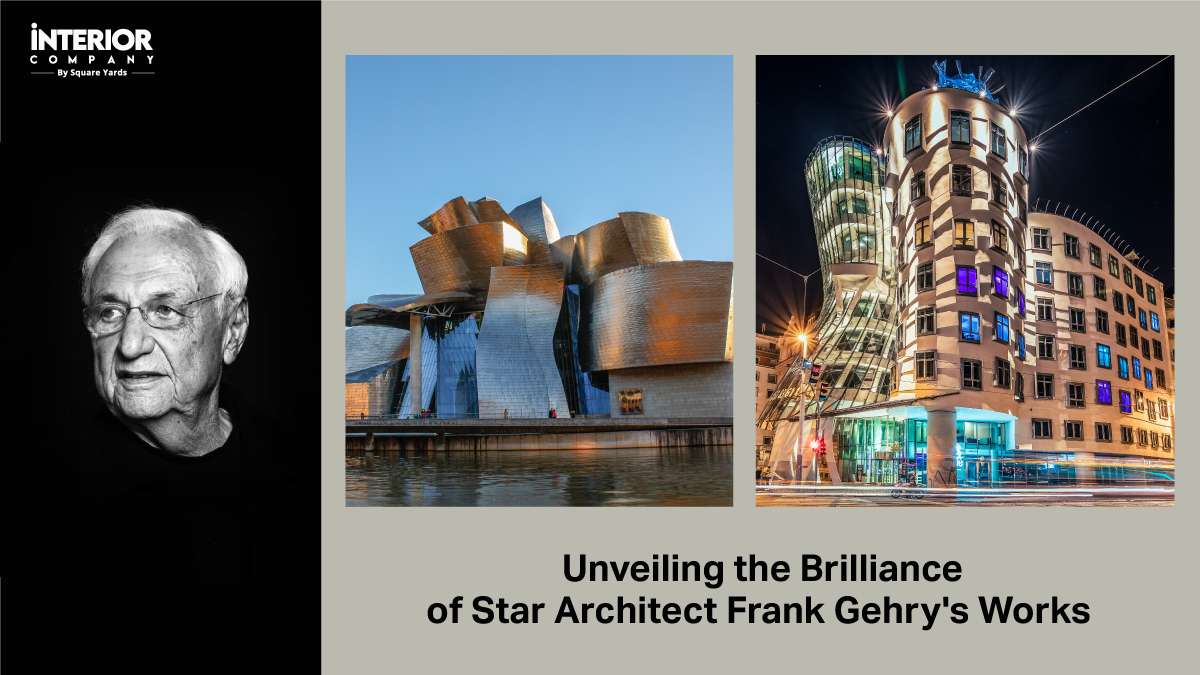“What I like best is breaking down the project into as many separate parts as possible”.
Frank Gehry is a free-spirited architect who does not constrain himself to basic structures, sections, and elevations. His approach to design is completely unique, with a seamless flow of movement in response to the context of the surroundings. Inspired by nature, music and creatures, his buildings drive vast creativity and innovation characterised by non-traditional materials and deconstructive style.
What is Deconstructivism?
The term Deconstructivism was coined in the Soviet Union during the 1920 and 30s- the culmination of disruptive ideas breaking the notion of constructive style of geometry, symmetry, and visually stable structures. Resurrected back in the 1980s, it is a postmodern architectural style with fragmented and curvaceous forms, and scattered designs. Including Gehry, there are several architects who were the driving force of this movement, like Zaha Hadid, Rem Koolhaas, Daniel Libeskind, Peter Eisenman, Bernard Tschumi, and Wolf Prix.
Also Read: Frank Lloyd Wright Architecture Projects
Iconic Structures Designed By Frank Gehry
“For me, every day is a new thing. I approach each project with a new insecurity, almost like the first project I ever did. And I get the sweats. I go in and start working, I’m not sure where I’m going. If I knew where I was going I wouldn’t do it.” Frank Gehry
A living legend, Frank Gehry has won several accolades, including the Pritzker Prize in 1989 and has revolutionised the era of Modern Architecture. Let’s take an in-depth look at some of Frank Gehry’s Famous Buildings across the globe.
1. Walt Disney Concert Hall, Los Angeles, California
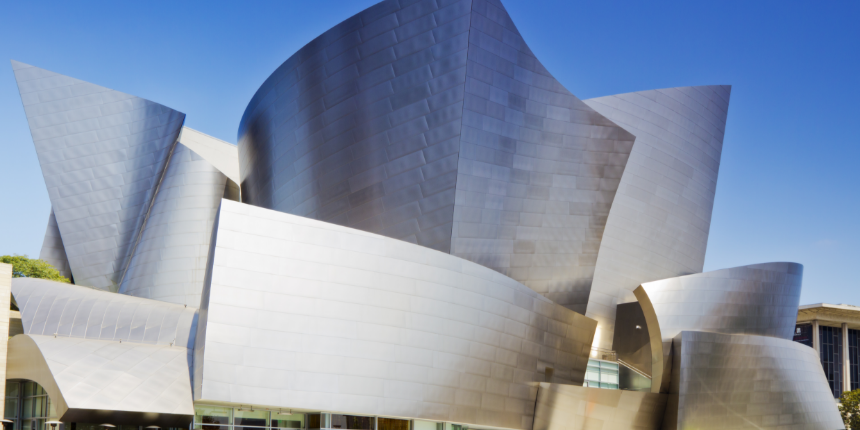
Nestled in the heart of downtown Los Angeles, The Walt Disney Concert Hall is a landmark building known for its striking design, inspired by Gehry’s passion for sailing. The building’s exterior facade features undulating surfaces and sweeping curves of stainless-steel exterior, which creates a sense of free-flowing movement, adding to its dynamic and organic appeal. Furthermore, the interiors are equally impressive with the state-of-the-art acoustic design, enhancing the visitor’s experience.
2. Gehry House, Santa Monica, California
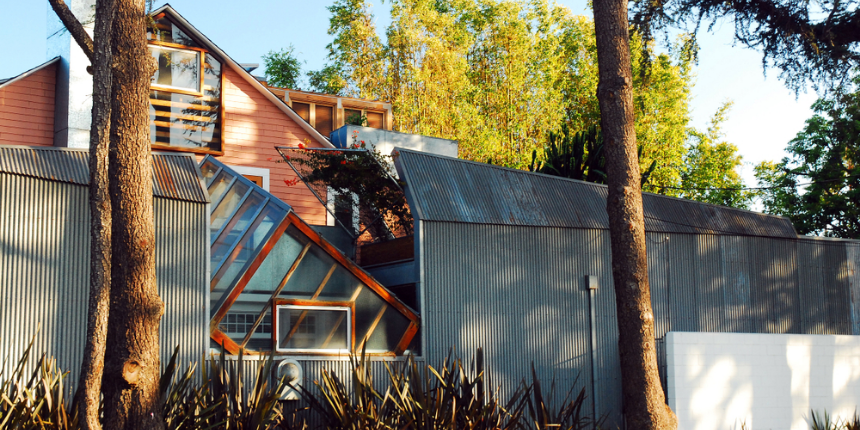
This is the Frank Gehry Work that became the turning point in his career and earned him a household name. Located on a well-known street corner in Santa Monica, Frank and Berta Gehry’s residence made a huge splash in the residential design. The existing Dutch colonial house was left almost completely intact but with a contemporary twist by tearing down and rebuilding the walls, and the new house was built enveloped with a riotous mix of materials, including glass, plywood, corrugated metal, and chain link. The design was thought-provoking, celebrating art entwined with architecture.
Also Read: Complex Designed by Hafeez Contractor
3. Foundation Louis Vuitton (Paris, France) | Frank Gehry
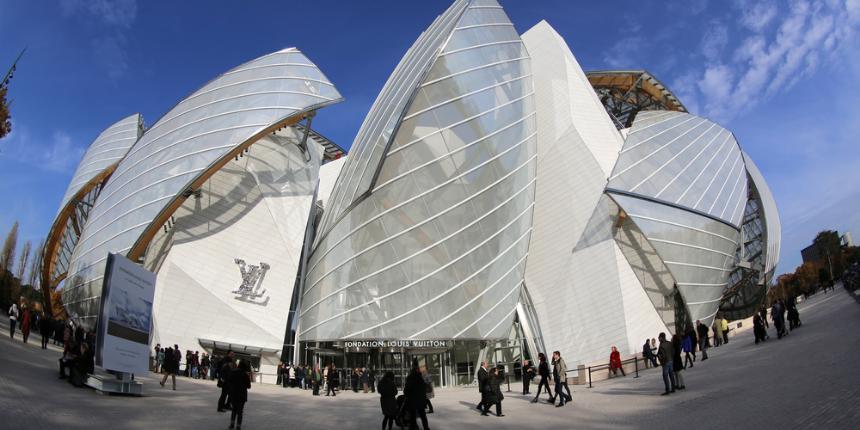
Set in the fashion city Paris and established by the luxurious brand Louis Vuitton, the building’s unique exterior takes a shiplike form and is composed of 3,600 glass panels. The complex geometric shape bestows a sense of grandeur, while the interplay of light and shadows provides an enthralling environment for visitors. Eleven exhibition galleries, it promotes contemporary art and has become a cultural landmark in the city.
4. Frank Gehry Dancing House, Prague, Czech Republic

Perhaps the most iconic Frank Gehry Building is the Dancing House. It was built for the Nationale-Nederlanden Dutch insurance company but now operates as a hotel. The structure is reminiscent of a dancing form, nicknamed after the dancing duo Fred Astaire and Ginger Rogers. The curved and angular surface of the building is erected of metal mesh, glass and concrete, defining Gehry’s architectural Style deconstructivism, giving a playful and whimsical appearance. Today, it stands out as an architectural feat in Prague, attracting thousands of tourists every year.
5. Frank Gehry Museum Guggenheim Bilbao
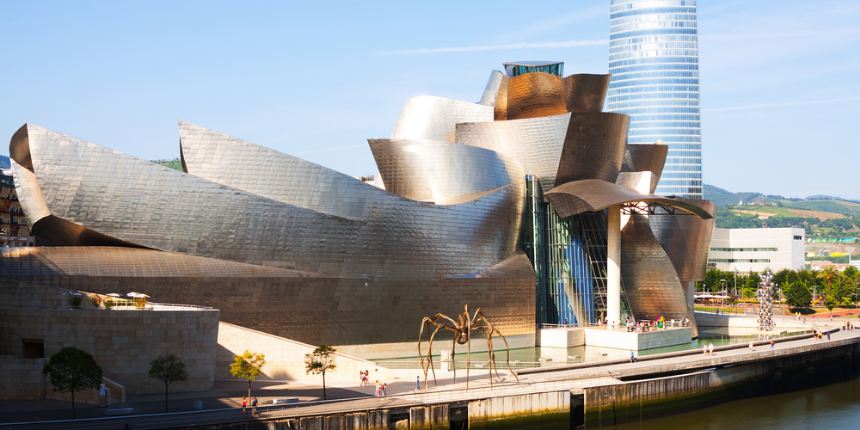
Set on the edge of the vibrant Basque city of Bilbao, Spain, the Guggenheim Museum, with its dazzling exterior of curved titanium panels has changed the way people and architects think about exhibition spaces. The state-of-the-art museum is one of Gehry’s famous buildings proposed by the regional government to reinvigorate Bilbao’s economy and become a symbol of the city’s cultural identity.
This metallic architectural marvel resembles a boat from the ground, evoking the city’s industrial history and a beautiful flower from above. The interior of the museum features an atrium and nineteen galleries spread across multiple levels and finished in titanium, limestone and glass. The building’s profound success attracted millions of visitors, resulting in the dynamic transformation of the city now referred to as the “Bilbao Effect”.
6. Museum of Pop Culture- MoPOP

Formerly known as the EMP Experience Museum Project, this is an exuberant cultural institution in Seattle. Its vibrant and ripple form is inspired by the rock and roll music and the vibe it has. During the initial stages of designing, Gehry purchased several electric guitars and sliced them up to use them as the building blocks for his model. The project was completed in 2000 and hosts more than 100 arts and cultural events annually. Frank Gehry’s Building is celebrated for its groundbreaking approach and zeal, highlighting the musical impact on the world.
7. Biomuseo, Panama City
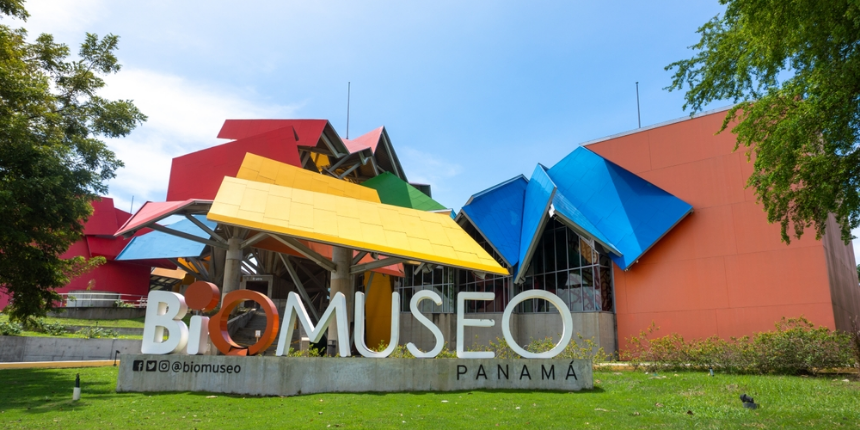
This one is Gehry’s first project in Latin America, crafted to preserve the natural history and biodiversity of Panama. The dazzling museum features his signature style breaking the traditional norms of form and functionality evident from its crumpled roofline. The vibrant, angular shape of the ecology museum complements the surrounding landscape and the local context and evokes a feeling of immersion in the natural habitat.
“This project has held a special place in my heart; I have deep connections with the people of Panama, and I believe strongly in the conservation of biodiversity across the globe.”
8. Frank Gehry Fish Building Olympic Pavilion

One of Gehry’s most eminent buildings is this 52 m-long golden fish structure, created for the 1992 Olympic Village, which has also become the beloved destination of Barcelona’s seafront. The structure is a groundbreaking example of using 3D aeronautical design software; a marvel of modern design and engineering. Here, depending on the sun’s angle and the weather condition, the fish radiates iridescent colours.
9. Weisman Art Museum, Minneapolis
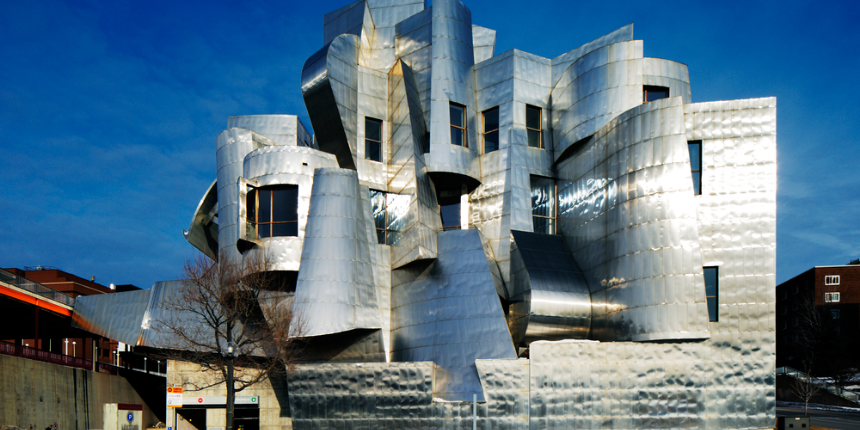
The distinguished design of the Weisman Art Museum, with its asymmetrical curves and metallic skin, made it a symbolic structure in Minneapolis city. Completed in 1993, the museum envelops the visitors with its seamless flow and connection of art. Perched on the banks of the Mississippi River, its terraced design allows for harmonious interaction between visitors and the surrounding natural environment.
10. Stata Center, Cambridge
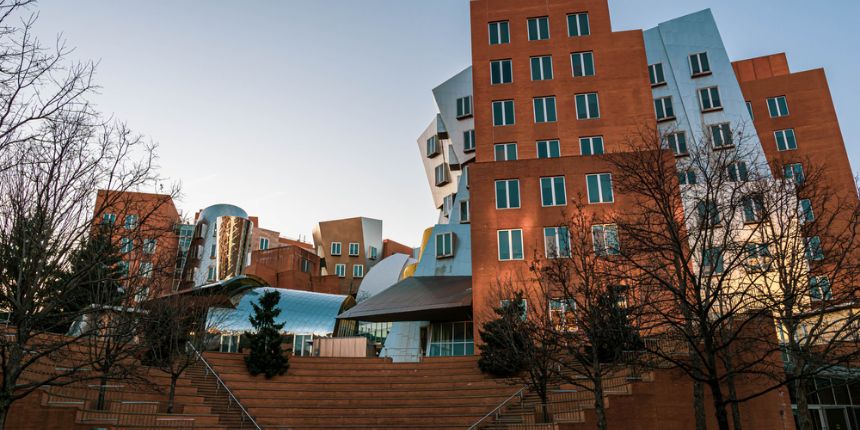
Gehry’s designs are unconventional, reflecting curves and wrinkled forms that express movement and aesthetic quality. This building is another such mesmerising piece of art. The Stata Centre Complex includes research facilities, classrooms, and a large auditorium specifically designed for MIT researchers and students. The organic shape is ever-changing between red brick and shiny metal to the Zigzagging metal canopies at the entrance and the bright yellow-coloured amphitheatre. It is an impressive sight to behold for visitors and occupants alike.
The Deconstructive Architect!
Frank Gehry is a master of sculptural architecture, and his compositions are both functional and aesthetically pleasing. His philosophical architectural style and playful designs demonstrate his creativity and technical excellence resulting in striking structures that have truly redefined the imaginative power of modern architecture. Gehry’s buildings and revolutionary craft continue to inspire future architects, visitors and admirers from all over the globe.
